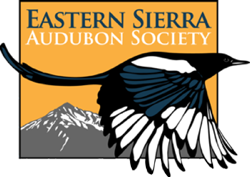Conservation Issues in the Eastern Sierra (and beyond)
Issues affecting birds and other wildlife and their habitat
[Under Construction]
- Climate Change
-
Audubon believes that Climate Change is the biggest threat to bird species today. Shrinking and shifting ranges could imperil nearly half of U.S. birds within this century, according to the National Audubon Climate Report, which you can read at climate.audubon.org
To help localize these findings, Audubon provided a list showing the bird species whose current "climate range" falls within Eastern Sierra Audubon's territory, which includes 104 species. View the information on species at risk in Eastern Sierra Audubon's region here: esaudubon.org/conservation/climate_change/at-risk_species.php
- "Death Pipes"
Uncapped vertical metal and plastic pipes form death traps for birds and other wildlife. These pipes can be found everywhere and are used for a wide variety of purposes. There may even be some on your roof (vent pipes for sewer systems are an example). This is a nearly invisible problem. Unlike birds colliding with buildings, windows or other structures where they remain visible and obvious to people, birds trapped in pipes end up dying a slow death completely unnoticed in sewer systems, septic tanks, or other hidden locations. The solutions can be simple and inexpensive, but they require action and awareness of the problem. Read more about the problem and what you can do on this PSA flyer from Audubon's Kern River Preserve.
Because of Audubon attention to this issue, in June 2012, Daniel Burnett of Kerncrest Audubon Society contacted LADWP Watershed Resources Specialist Debbie House regarding open-end fence pipes he had observed on LADWP property along Lee Vining Creek during a Mono Lake Chautauqua field trip. He also shared written information regarding the potential dangers open-end pipes present to wildlife.
Ms. House visited the site and found open-ended steel pipes had been used as fence posts around the perimeter of LADWP property. She inspected several of the pipes, and in some of them (especially those near trees), found the remains of birds. Ms. House recommended to LADWP management that the issue be addressed to ensure that wildlife would not become entrapped in the future. Read the full article on the project in the September-October 2014 Eastern Sierra Audubon Newsletter.
- Industrial Wind Energy Development
-
Alternative, renewable or "Green" Energy projects are problematic for conservationists at times, because the benefits of the green energy are often offset with other impacts, such as the very large number of bird deaths from wind turbines. The National Audubon Society has come out in support of wind power, stating: "Audubon strongly supports properly sited wind power as a renewable energy source that helps reduce the threat posed to birds and people by climate change. However, we also advocate that wind power facilities should be planned, sited, and operated in ways that minimize harm to birds and other wildlife, and we advocate that wildlife agencies should ensure strong enforcement of the laws that protect birds and other wildlife." Read more about Audubon's position here.
- More Information from Audubon about Wind Energy:
-
- Audubon’s position on wind power (and eagles), 12/11/2013, California Audubon
- California Audubon policy on Proper siting of wind energy development
- Audubon Opposes the Interior Department’s 30-Year Eagle Permit Rule for Wind Farms (December 2013)
- Green Energy: Can We Save the Planet and Save Birds? Audubon Magazine, March-April 2014
- Putting Wind Turbines Out of Wildlife's Way, Audubon Magazine, November-December 2011
- Windfall, Audubon Magazine, September-October 2010
- Selling the Wind, September-October 2006
- Audubon Saves Habitat Through Careful Energy Development Planning - about transmission lines required for industrial scale renewable energy projects.
- MORE: All California Audubon posts tagged "Alternative Energy"
- Sign up for California Audubon's Action Alerts for more, up-to-date, information!
- Industrial Solar Energy Development
-
- Sign up for California Audubon's Action Alerts for more, up-to-date, information!
- Lead
-
- Lead has No Place in the Environment
- Sign up for California Audubon's Action Alerts for more, up-to-date, information!
- Important Bird Areas
-
We have 15 Important Bird Areas (IBAs) in the Eastern Sierra - read more about them here: Important Bird Areas
- Bird Species of Interest in our Area
-
Greater Sage-Grouse - an obligate sagebrush ecosystem species.
Burrowing Owls - Audubon California's 2013 Bird of the Year
Black-backed Woodpeckers
-
There are many more - check California Audubon and National Audubon for more information.


